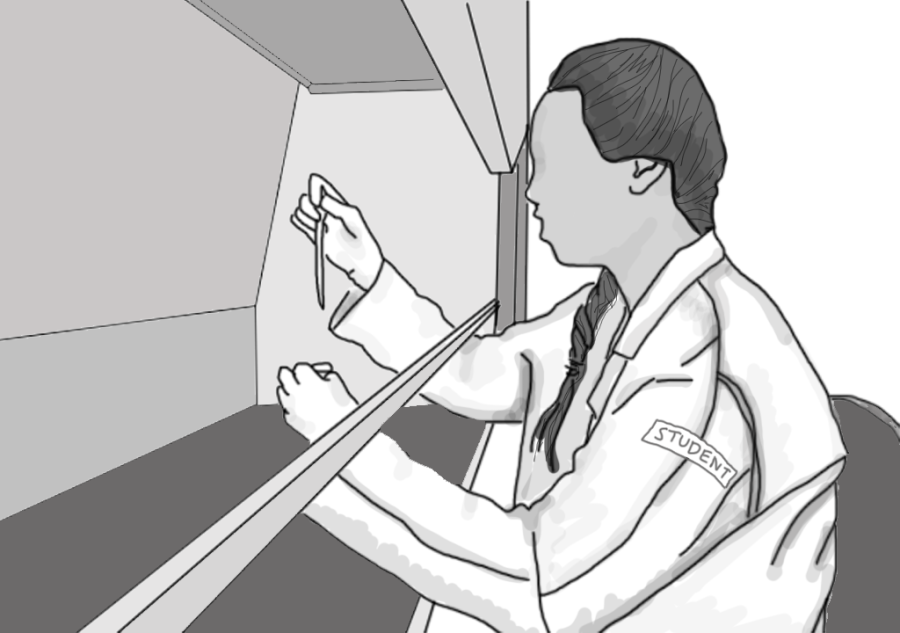There are numerous paths to learning; in fact, every individual has his or her own unique learning style and method to accommodate their education. While some take a visual or verbal approach through traditional lectures and visual displays, others may prefer a more hands-on approach, gaining knowledge through experiences and discoveries. At Palo Alto High School, as teachers continue to innovate the classroom through new projects and learning opportunities, students get the best of both worlds. Many teachers offer conventional lectures with the occasional graphics, pictures and charts, but students may also pursue experiential learning through projects across a variety of subjects through opportunities such as the Twenty Percent Project and the Science Research Project course.
Twenty Percent Project
Throughout the past few years, various teachers in Paly’s English department have offered the Twenty Percent Project, a Google project that gained widespread attention as a project that could be implemented into education. The project allows students to dedicate 20 percent of their time in a specific class to pursue side projects they are interested in and ultimately create an end product. Erin Angell, who incorporated the Twenty Percent Project in her World Literature course in previous years, views the Project as an opportunity to blend subject matter with students’ interests and aspirations.
“I would define the Twenty Percent Project as being a passion project where a student is able to select a project through which the goals of the subject matter will be gained,” Angell said. “They’re looking to learn the skills of doing English [for example]. Rather than focusing on a specific book that the teacher has in mind, [they get] to select a project that will result in some kind of product or experience through which the subject matter can be learned.”
One of the key elements of the Twenty Percent Project learning approach is that students are granted the freedom to choose a topic they find interesting, allowing for deeper involvement in the execution of the project.
“I think there is socioemotional and character learning that happens [while doing the Twenty Percent Project],” Angell said. “The way you get the socioemotional part of it is because [the topic] is self selected, so you have a level of engagement and interest that is significantly higher and there is a correlation between that and achievement of subject-specific skills, standards and goals. You use and leverage that part as a teacher in order to get that. You get more of the good stuff but through this thing that is really enjoyable too.”
Unlike other forms of traditional learning, the Twenty Percent Project requires a unique level of self-motivation and direction, skills that Angell believes are important in the learning process.
“A lot of identifying what the topic will be and breaking the end goal into parts, that’s something that the student is highly engaged in and I think that’s more reflective of the things that happen outside of a traditional learning environment,” Angell said. “Our students have said that they are really interested in pursuing, those sorts of jobs and careers are things that are going to require a high level of self motivation and more importantly, self direction. I think passion projects like the Twenty Percent Project are things that help develop skills within the students to be able to self direct and self motivate.”
Projects similar to the Twenty Percent Project continue to be incorporated into the Paly curriculum, as the Social Justice Pathway hopes to implement a senior capstone project where students will choose a social justice issue and attempt to create a solution, change, or end product.
Science Research Project
Similar steps are being taken by the Paly Science department. Science Research Project is a course that supports learning through experience and real world application. Currently, Science Research Project is an eighth period course where students meet weekly to check in on their progress in research and experimentation applications.
According to Science Research Project teacher, Keith Geller, the class offers a unique opportunity for students to be exposed to science in the world beyond the classroom.
“The Science Research Project course is a course in which students work with mentors in actual research,” Geller said.
Through a diverse array of resources, professors and research labs, students are given the opportunity to pursue a variety of interests in science.
“I’ve had students working at Stanford Medical School, I’ve had students working in the biological sciences with professors at Stanford, we’ve had people working on NASA, we’ve had people with United States Geological Survey, we’ve had people working with small research firms, [and I even] had a student a couple years ago work with the San Francisco Zoo,” Geller said.
According to Jenny Xin, a current student in the Science Research Project course, this course teaches students a variety of skills related to the scientific process.
“I think [Science Research Project] provides a great structure for learning to manage lab time, writing up research papers and giving presentations, and being exposed to all different types of projects in STEM fields, that you wouldn’t necessarily see working in solitude in one lab,” Xin said.
Ultimately, this course allows students to learn about the scientific process through their experiences.
“Our goal is that students will have a better appreciation and a better understanding of the entire scientific process and how rigorous and thoughtful it is,” Geller said.
Through projects such as the Twenty Percent Project and courses like Science Research Project, Paly continues to implement innovative classroom structures that foster learning through experiences.


